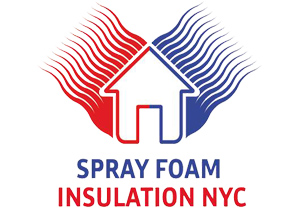WHERE CAN SPRAY FOAM BE APPLIED
Spray Foam insulation is a wildly diverse product in its features and benefits as well as its very unique ability to be applied to a vast range of substrates. We are going to take a look at a number of various substrates that Spray Foam can be applied to and what steps should be taken to ensure proper adhesion and performance of the foam insulation. A general for all substrates that one may work with when spraying foam is that they must be clean, dry, and free of grease, oil, loose scale or rust, etc. Another rule to follow when spraying onto a new, unknown substrate is to spray a small 2’ x 2’ test area first, leave to sit overnight, and test for adhesion the next day before continuing to spray.
Wood, Gypsum Board and Fiberboard:
it is suggested that the maximum moisture content of wood to be sprayed with foam should be below 10%. Special care need be taken with laminates, such as some plywood, due to the possibility of higher moisture content and the possible presence of surface treatment which can adversely affect the Spray Foam. It is recommended that an adhesion test be performed if the moisture content is suspected to be higher than 10%.
Stainless Steel:
the surface should be cleaned with xylol or mineral spirits and then primed. In some cases, to achieve adequate adhesion between the primer and the stainless steel, it may be necessary to sand blast.
Glass:
no special preparation other than usual cleaning is required for glass. If Spray Foam is applied to the inside of a window, an ultra violet resistant coating should be applied to the glass prior to spraying to prevent degrading of the Spray Foam by sunlight coming through the window.
Galvanized Steel:
new galvanized steel should be washed with a solvent or acid, then with water, and finally, primed. Galvanized steel which has been allowed to weather may not need to be washed with solvent, and it may be possible to only wash with water and then prime.
Aluminum:
should be cleaned with a solvent, never with a caustic solution. Aluminum must always be primed prior to the application of Spray Foam to prevent corrosion of the aluminum after the application, by acids formed at the surface between the foam and aluminum.
PVC Plastics:
washing with a mild solvent such as mineral spirits is sufficient to prepare the surface of PVC. This plastic should be approached with caution, as PVC with high plastizer content may exhibit plastizer migration to the surface of the PVC after application of the Spray Foam resulting in loss of adhesion. Plastizer content is usually high in flexible PVC and very low in PVC that is used in PVC pipe.
Bare Steel:
Spray Foam insulation can usually be applied direct to bare steel after the standard removal of any bare scale or rust. It is important, however; that when insulating, tanks, that the steel be sand blasted and primed.
Concrete:
is one of the most difficult substrates to spray on because of the possibility of high moisture content. Make sure that the moisture content is under 10%, use a moisture meter to measure if needed. If there is excess salt precipitation for the concrete then it is best to clean the concrete with muriatic acid.
Asphalt and Tar:
it is important that the substrate be solvent free especially when the Spray Foam is applied to fresh asphalt or tar. If the asphalt or tar is old, it is safe to assume that it is solvent free and the surface can just be cleaned, primed, and sprayed.
